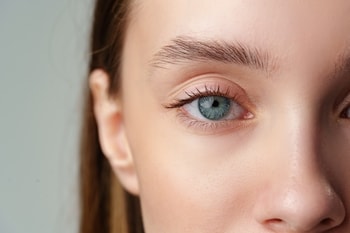Laser eye surgery, specifically LASIK eye surgery, is one of the most popular and effective treatments for correcting vision problems like nearsightedness, farsightedness, and astigmatism. The procedure involves reshaping the cornea to allow light entering the eye to be properly focused onto the retina, which can significantly reduce or eliminate the need for corrective lenses.
While laser eye surgery is an outpatient procedure with relatively low risks, understanding the laser eye surgery recovery time and the steps you need to take to ensure a smooth healing process is crucial. This blog’ll explore the LASIK surgery recovery process, what you can expect immediately after surgery, the typical recovery time, and how to care for your eyes to achieve the best results.
What Is Laser Eye Surgery?
Laser eye surgery encompasses several types of procedures that correct refractive vision problems. LASIK (Laser-Assisted in Situ Keratomileusis) is the most widely performed type of laser vision correction surgery. During the LASIK procedure, the surgeon creates a flap in the cornea (the clear, front surface of the eye) and uses an excimer laser to reshape the underlying corneal tissue. This reshaping allows light to focus more accurately on the retina, improving vision.
What Happens During LASIK Surgery?
- Preparation: Your eye surgeon will numb your eyes with numbing drops so you don’t feel pain during the surgery. The surgeon may also use a suction ring to keep your eye still and maintain proper alignment during the procedure.
- Corneal Flap Creation: The surgeon creates a thin, hinged LASIK flap in the cornea using a microkeratome or femtosecond laser. This flap is carefully folded back to expose the corneal tissue beneath.
- Laser Treatment: The excimer laser is then used to reshape the underlying corneal tissue, correcting the refractive error. The laser removes a small amount of tissue to flatten the cornea for nearsightedness or steepen it for farsightedness.
- Flap Repositioning: Once the laser reshaping is complete, the corneal flap is carefully repositioned to cover the treated area.
The entire laser eye surgery procedure typically takes 15-20 minutes per eye, and most patients experience minimal discomfort during and after the surgery.
What to Expect During the Recovery Process
While laser eye surgery is relatively quick and effective, understanding the LASIK recovery time is essential for managing your expectations. Most patients experience immediate improvement in their vision, but the recovery process can vary depending on individual circumstances and healing rates.
First Few Days After LASIK Surgery
Immediately following LASIK surgery, you can expect discomfort and blurry vision as your eyes heal. Here’s a typical timeline for the recovery period after LASIK surgery:
- Day 1 Post-Surgery:
- You will likely experience mild discomfort or a foreign body sensation in your eyes.
- Your vision may be blurry or fuzzy, and you might have trouble seeing clearly, especially in low light or at night.
- Eye drops (usually lubricating eye drops) will be prescribed to keep your eyes moist and comfortable.
- Follow-up appointments with your eye doctor will be scheduled to check your healing and progress.
- Days 2 to 3:
- Vision improvement typically begins, and blurred vision may start to clear up.
- You may still experience light sensitivity and some eye dryness or itching.
- You will be advised to avoid rubbing your eyes and to rest as much as possible.
- One Week After LASIK:
- Most patients can return to work or their regular activities, although they should avoid strenuous physical activities like swimming, sports, or heavy lifting.
- Your eye surgeon may recommend medicated eye drops to prevent infection and reduce inflammation during this time.
- Eye dryness is common during the first few weeks, and you might need to use artificial tears or other eye drops to keep your eyes hydrated.
One Month Post-Surgery
By one month after laser eye surgery, most patients experience significant improvements in vision. However, full recovery can take several weeks to a few months. Here’s what to expect during this stage:
- Vision Stabilization: Your vision will continue to stabilize, and you may notice improvements, such as sharper vision and fewer glare or halo effects around lights.
- Dry Eyes: Many patients still experience some dry eye symptoms, which can be managed with lubricating eye drops.
- Reduced Sensitivity: Most light sensitivity should resolve within the first month, although some patients may experience mild sensitivity to bright lights for a few months.
Long-Term Recovery (Up to 3 to 6 Months)

- Full Healing: Complete healing of the corneal tissue can take three to six months, with some residual dry eye symptoms.
- Stable Vision: For most patients, vision improves steadily, and the need for corrective eyewear (like glasses or contact lenses) is significantly reduced or eliminated.
- Infrequent Adjustments: If necessary, some patients may need a follow-up LASIK procedure (called an enhancement or touch-up), typically around six months post-surgery. However, this is uncommon.
Tips to Speed Up the Recovery Process
While your laser eye surgery recovery time will depend on various factors, there are several things you can do to ensure a smooth and speedy recovery process:
1. Follow Post-Operative Instructions
Your eye surgeon will provide specific guidelines for caring for your eyes after surgery. Following these instructions will help prevent complications and speed up the healing process. This may include:
- Using eye drops as prescribed.
- Avoiding contact sports and physical activities for a few weeks.
- Wearing protective eye shields while sleeping prevents accidental rubbing or pressure on the eyes.
2. Protect Your Eyes from Infection
In the days and weeks after surgery, it’s essential to protect your eyes from potential infection:
- Please keep your eyes clean and avoid touching them with dirty hands.
- Refrain from wearing eye makeup for at least a week to avoid irritating the healing cornea.
- Avoid swimming or submerging your eyes in hot tubs until your doctor clears you.
3. Limit Screen Time
Excessive screen time (from computers, smartphones, or televisions) can strain your eyes and slow healing. It’s best to take regular breaks and rest your eyes.
4. Manage Dry Eyes
Many LASIK patients experience dry eyes during the recovery period. Lubricating eye drops, as directed, can help relieve this discomfort. Your eye doctor may recommend additional treatments if dry eyes persist.
Benefits of LASIK Surgery: Why It’s Worth Considering
Laser eye surgery, specifically LASIK surgery, has become one of the most popular and effective procedures for correcting refractive vision problems like nearsightedness (myopia), farsightedness (hyperopia), and astigmatism. It offers a life-changing solution for many people who struggle with the daily inconveniences of wearing glasses or contact lenses. In this section, we will explore the benefits of LASIK surgery, especially how it can improve vision and quality of life, and why LASIK surgery wear is no longer a burden for those who choose it.
1. Freedom from Glasses and Contact Lenses

- Glasses fogging up during exercise or in humid conditions.
- Contact lenses drying out or irritating.
- Broken glasses or lost contact lenses require replacements.
- Time spent cleaning and maintaining eyewear.
With LASIK surgery, many patients experience significant improvement in their vision, often achieving 20/25 vision or better, which is enough to perform daily tasks without the need for glasses or contacts. This means that after LASIK, you can enjoy activities like:
- Sports and physical activities without worrying about your glasses slipping off or contact lenses falling out.
- Swimming and other water sports without the need for goggles or prescription lenses.
- Travelling without the hassle of packing multiple pairs of glasses or contact lenses.
LASIK offers clear vision without needing corrective eyewear for those tired of the daily maintenance of contact lenses or the discomfort of wearing glasses.
2. Quick and Effective Procedure
LASIK surgery is known for its speed and effectiveness. The procedure typically takes 15-20 minutes per eye, and most patients are in and out of the surgery center within an hour. LASIK surgery wear is not a concern during the procedure because the recovery time is quick, with minimal discomfort during and after the procedure.
The laser is precisely controlled and reshapes the cornea to correct refractive errors. Because LASIK uses an advanced excimer laser, the procedure is relatively pain-free, and patients often describe it as feeling only slight pressure during the procedure.
After the surgery, patients can expect:
- A quick recovery time, with most people returning to normal activities the following day.
- There is little to no downtime, making it easier for people with busy lifestyles to return to work or school without significant disruption.
Many patients notice dramatic improvements in their vision within a few days, and they can achieve clear sight without relying on glasses or contact lenses.
3. Long-Lasting Results
The results of LASIK surgery are long-lasting. Unlike glasses or contact lenses, which need to be replaced or adjusted over time, LASIK typically provides a permanent solution to refractive vision problems. LASIK surgery wear has become a thing of the past, and you no longer need to worry about regular eye exams to update prescriptions or keep up with lens replacements.
After the procedure, most people experience stable vision for many years. While vision changes are a natural part of the aging process (e.g., presbyopia), the effects of LASIK generally last, and the need for corrective eyewear is often minimized or eliminated. Some people may need touch-up surgeries (also known as enhancements) after several years, but this is a rare occurrence, and the vast majority of patients find that their vision remains stable for many years after LASIK surgery.
4. Improved Vision Clarity
LASIK surgery significantly improves visual acuity for most patients, with many achieving 20/25 vision or better. This means patients can see near and far distances without needing glasses or contact lenses.
The procedure is specifically designed to address the common causes of poor vision:
- Nearsightedness (myopia): LASIK can flatten a too-steep cornea, reducing nearsightedness and allowing light entering the eye to focus correctly on the retina.
- Farsightedness (hyperopia): LASIK can steepen a too-flat cornea, allowing light to focus on the retina and improving distant vision.
- Astigmatism: LASIK can correct an irregularly shaped cornea, improving the quality of vision at all distances.
Whether you’re driving, reading, or participating in other activities, LASIK can significantly improve your vision, making everyday tasks easier and more enjoyable. Improved vision can also positively impact overall quality of life by reducing eye strain, eliminating the need for frequent prescription updates, and providing clearer sight in both bright and dim lighting conditions.
5. Enhanced Confidence and Self-Esteem
For many people, glasses or contact lenses are essential to their identity but can also negatively impact their confidence or self-esteem. Some individuals feel self-conscious about wearing glasses, while others find contact lenses uncomfortable or inconvenient.
LASIK surgery offers a way to improve self-confidence by eliminating the need for corrective eyewear. After surgery, patients can enjoy clear vision without worrying about how they look or whether their glasses will get in the way. Whether you’re meeting new people, attending social events, or simply going about your day, LASIK surgery wear can profoundly impact your self-esteem by allowing you to feel more comfortable and confident.
When to Contact Your Eye Doctor

- Worsening or significantly blurred vision that doesn’t improve after a few days.
- Persistent pain or discomfort that doesn’t subside.
- Signs of infection, including redness, discharge, or increasing swelling around the eyes.
- Sudden loss of vision or other vision disturbances.
Conclusion
The recovery time for laser eye surgery varies depending on individual factors, but most patients can expect to experience significant improvements in vision within the first month following surgery. Although discomfort and mild dry eyes may persist for a few weeks, the healing process generally continues for three to six months.
By following your eye surgeon’s post-operative instructions, taking good care of your eyes, and attending follow-up appointments, you can help ensure a smooth recovery and enjoy improved vision without needing glasses or contact lenses. If you experience complications, always consult your eye doctor for professional guidance and treatment.
References
https://www.verywellhealth.com/lasik-recovery-time-short-term-and-long-term-considerations-3421966
https://www.aao.org/eye-health/treatments/laser-surgery-recovery
https://www.medicalnewstoday.com/articles/what-to-know-about-lasik-recovery-and-its-effects#:~:text=The%20eye%20usually%20takes%202,to%20vision%2C%20and%20visual%20glares.